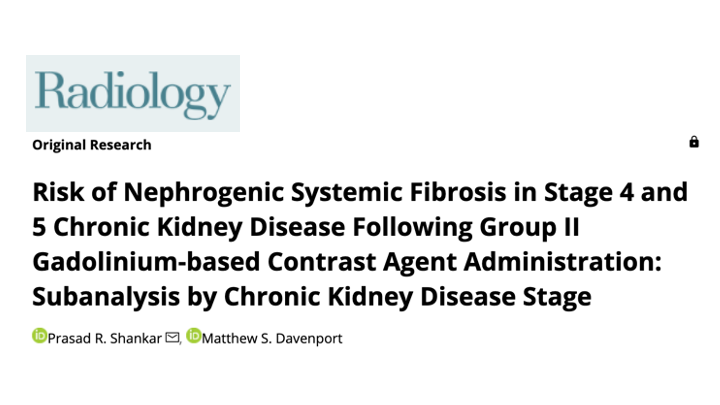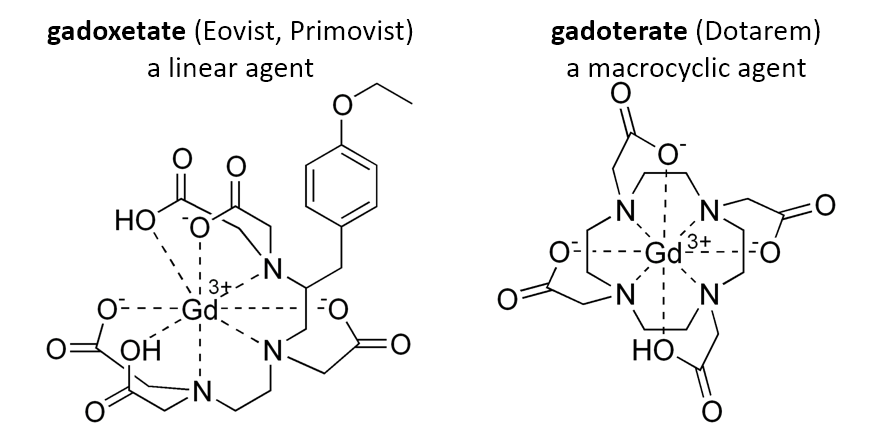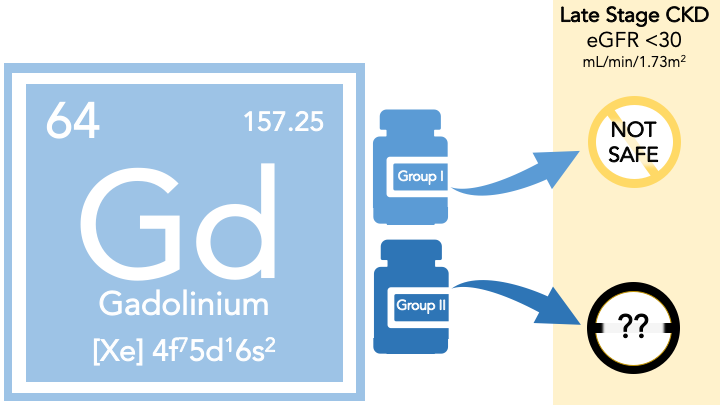Discover and read the best of Twitter Threads about #RadInTraining
Most recents (12)
Trends of patient exposure from radiologic and nuclear medicine procedures 2009-2018: Comparison of US vs. global data
@radiology_rsna @RadITrainEditor @Hopkins_Rad @HopkinsMedicine
#tweetorial #RadInTraining
pubs.rsna.org/doi/10.1148/ra…
@mmahesh1, Armin J. Ansari, Fred A. Mettler
@radiology_rsna @RadITrainEditor @Hopkins_Rad @HopkinsMedicine
#tweetorial #RadInTraining
pubs.rsna.org/doi/10.1148/ra…
@mmahesh1, Armin J. Ansari, Fred A. Mettler
2/ BACKGROUND
Patient radiation exposure is affected by # of procedures, radiation dose per procedure, and population size. Woldwide, which of the following modalities resulted in the most exams annually?
Patient radiation exposure is affected by # of procedures, radiation dose per procedure, and population size. Woldwide, which of the following modalities resulted in the most exams annually?
1/17
🫁 COVID-19 (nearly) three years on: what do we know about its effects on the lungs? And where do we go from here?
A major review published in @radiology_rsna at doi.org/10.1148/radiol…
A #RadInTraining #TWEETORIAL thread
🫁 COVID-19 (nearly) three years on: what do we know about its effects on the lungs? And where do we go from here?
A major review published in @radiology_rsna at doi.org/10.1148/radiol…
A #RadInTraining #TWEETORIAL thread
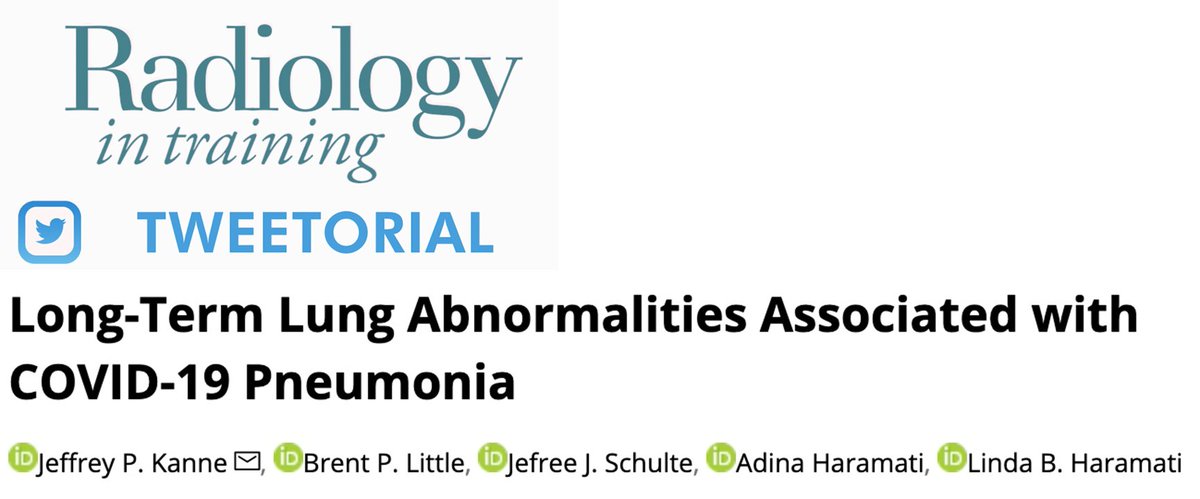
2/17
First, a quiz! What proportion of patients (with any disease severity) still have residual COVID-19 lung changes 12 months after diagnosis?
First, a quiz! What proportion of patients (with any disease severity) still have residual COVID-19 lung changes 12 months after diagnosis?
3/17
⭐️Correct answer⭐️30% have residual lung changes on CT up to 12 months after diagnosis. What is the most common finding?
⭐️Correct answer⭐️30% have residual lung changes on CT up to 12 months after diagnosis. What is the most common finding?
Ever wondered how could we improve motion artifacts on abdominal MRI?
A #TWEETORIAL based on our RESEARCH IN PRACTICE article for #RadIntraining @radiology_rsna
@MGHImaging @nyulangone @IcahnMountSinai @BarunBagga
A #TWEETORIAL based on our RESEARCH IN PRACTICE article for #RadIntraining @radiology_rsna
@MGHImaging @nyulangone @IcahnMountSinai @BarunBagga

2/ 17
This focused review article by our team discusses methods that can be applied to manage respiratory motion in abdominal MRI.
Link: pubs.rsna.org/doi/epdf/10.11…
This focused review article by our team discusses methods that can be applied to manage respiratory motion in abdominal MRI.
Link: pubs.rsna.org/doi/epdf/10.11…
3/17
Take away:
Newer strategies to manage respiratory motion include accelerated imaging or free-breathing motion-robust image acquisition.
Artificial intelligence methods to manage motion artifacts are under development but require testing for generalizability
Take away:
Newer strategies to manage respiratory motion include accelerated imaging or free-breathing motion-robust image acquisition.
Artificial intelligence methods to manage motion artifacts are under development but require testing for generalizability
1- Everything you need to know about ultrasonography of Superficial Soft Tissue masses in this #Tweetorial based on the Conference Consensus Statement published in @radiology_rsna: doi.org/10.1148/radiol…
#RadIntraining @RadITrainingEditor @RadiologyEditor @jjacobsn
🧵 1/15
#RadIntraining @RadITrainingEditor @RadiologyEditor @jjacobsn
🧵 1/15

2- In small superficial soft tissue masses, ultrasonography is an excellent examination, allowing real-time manual compression, direct patient interaction and study with Doppler. Deeper lesions often require MRI for further characterization.
2/15
2/15
3- Among the following ultrasound criteria, which one is atypical of lipoma?
A-Gently curved echogenic lines parallel to the skin surface
B-Non compressible mass
C-Iso or hyperechoic compared with adjacent subcutaneous tissue
D-No detectable internal blood flow on Doppler US
A-Gently curved echogenic lines parallel to the skin surface
B-Non compressible mass
C-Iso or hyperechoic compared with adjacent subcutaneous tissue
D-No detectable internal blood flow on Doppler US
1/🧵
How to write the PERFECT scientific paper for @radiology_rsna?
Let's explore @RadiologyEditor's Top 10 tips in this short #Tweetorial!
Don't forget to share 👍
pubs.rsna.org/doi/epdf/10.11…
#RadRes #RadEd #MedTwitter #RadInTraining @RSNA @RadITrainEditor @francisdeng
How to write the PERFECT scientific paper for @radiology_rsna?
Let's explore @RadiologyEditor's Top 10 tips in this short #Tweetorial!
Don't forget to share 👍
pubs.rsna.org/doi/epdf/10.11…
#RadRes #RadEd #MedTwitter #RadInTraining @RSNA @RadITrainEditor @francisdeng

2/
Being a successful expert reviewer =/= being so as an expert writer.
Why?
➡️ Difficult to be self-critical
➡️ No "formal" training in writing
How to improve then (besides accumulating years of exp😅)?
Here are the Top 10 Tips from @radiology_rsna Scientific Style Guide!
Being a successful expert reviewer =/= being so as an expert writer.
Why?
➡️ Difficult to be self-critical
➡️ No "formal" training in writing
How to improve then (besides accumulating years of exp😅)?
Here are the Top 10 Tips from @radiology_rsna Scientific Style Guide!
1- Are you currently daydreaming while your patient is performing a long MR examination? During these few minutes, do you want to learn more about task-based and resting state functional MRI? Everything you need to know is below
@RadInTrainingEditor @radiology_rsna
#TWEETORIAL
@RadInTrainingEditor @radiology_rsna
#TWEETORIAL
2- A new study from Behestian et al published in @radiology_rsna builds the future of functional brain MRI (fMRI).
pubs.rsna.org/doi/10.1148/ra…
2/12
pubs.rsna.org/doi/10.1148/ra…
2/12

3- If you are already familiar with task-based and resting state fMRI, you can check the InAMinute video about this amazing study.
pubs.rsna.org/doi/10.1148/ra…
3/12
pubs.rsna.org/doi/10.1148/ra…
3/12
How does family or medical leave impact up on a resident/fellow’s training?
A # TWEETORIAL based on editorial from radiology article by Magudia et al
#RadIntraining @radiology_rsna @AAWR_org @theAPDR @ACRORadOnc @ASTRO_org @RadiologyACR @RadChiefs @S_W_R_O
A # TWEETORIAL based on editorial from radiology article by Magudia et al
#RadIntraining @radiology_rsna @AAWR_org @theAPDR @ACRORadOnc @ASTRO_org @RadiologyACR @RadChiefs @S_W_R_O
Tweet 2/13
Editorial by Magudia et al. proposes a family/medical leave policy for diagnostic, interventional, and radiation oncology residents in the United States.
doi.org/10.1148/radiol…
Editorial by Magudia et al. proposes a family/medical leave policy for diagnostic, interventional, and radiation oncology residents in the United States.
doi.org/10.1148/radiol…

Tweet 3/13
Take away:
In addition to current up to 4 weeks of vacation per year, the proposal would allow a resident to:
1) take up to 12 weeks of family or medical leave
2) additional family or medical leave with approval from program director on case by case basis.
Take away:
In addition to current up to 4 weeks of vacation per year, the proposal would allow a resident to:
1) take up to 12 weeks of family or medical leave
2) additional family or medical leave with approval from program director on case by case basis.
How can Ultrasound Elastography be used to diagnose liver fibrosis? 👉
A #TWEETORIAL based on the first-ever @radiology_rsna Research In Practice article -- all images presented are from pubs.rsna.org/doi/10.1148/ra…!
#meded #RadInTraining #radres #futureradres #incomingradres
1/
A #TWEETORIAL based on the first-ever @radiology_rsna Research In Practice article -- all images presented are from pubs.rsna.org/doi/10.1148/ra…!
#meded #RadInTraining #radres #futureradres #incomingradres
1/
Dr. @AileenO_Shea and Dr. Theodore Pierce from @MGHImaging present a case of a patient with known liver steatosis and bridging fibrosis lost to follow-up. Eventually, this patient was diagnosed with cirrhosis after noninvasive investigation with ultrasound elastography.
2/
2/

Which of the following are clinical manifestations of chronic liver disease?
1️⃣ weight loss and jaundice
2️⃣ scleral icterus and rash
3️⃣ transaminitis and thrombocytosis
4️⃣ 1 & 2
5️⃣ all of the above
3/
1️⃣ weight loss and jaundice
2️⃣ scleral icterus and rash
3️⃣ transaminitis and thrombocytosis
4️⃣ 1 & 2
5️⃣ all of the above
3/
2 Shades of Gray in Susceptibility Weighted Imaging (SWI)
A #RadInTraining #TWEETORIAL for #radiologists & #radres on technical aspects and #neurorad clinical applications of SWI, inspired by @radiology_rsna review:
pubs.rsna.org/doi/10.1148/ra…
(Figures adapted from article)
1/15
A #RadInTraining #TWEETORIAL for #radiologists & #radres on technical aspects and #neurorad clinical applications of SWI, inspired by @radiology_rsna review:
pubs.rsna.org/doi/10.1148/ra…
(Figures adapted from article)
1/15

2/ SWI can distinguish between which of the following?
3/ ANSWER: All of the above
SWI is a gradient-echo MR sequence that accentuates local magnetic field distortions from paramagnetic (i.e. hemosiderin) and diamagnetic (i.e. calcification) properties through signal loss in the form of T2*. Phase data can highlight these differences
SWI is a gradient-echo MR sequence that accentuates local magnetic field distortions from paramagnetic (i.e. hemosiderin) and diamagnetic (i.e. calcification) properties through signal loss in the form of T2*. Phase data can highlight these differences
DECT- An innovative CT technology, produces numerous imaging datasets at >1 energy level. The image reconstruction algorithms lead to pitfalls, the radiologists must be aware of. A #Tweetorial thread
@RadioGraphics @cookyscan1
#RGphx
doi.org/10.1148/rg.202…
@RadioGraphics @cookyscan1
#RGphx
doi.org/10.1148/rg.202…

DECT enables the synthesis of a wide array of images from a single acquisition because of the availability of CT projection data at more than one polychromatic energy level. Currently, six major approaches are used for DECT.
@RadioGraphics @cookyscan1
#RGphx

@RadioGraphics @cookyscan1
#RGphx


VMC images-specific to DECT, available with all platforms at multiple keV levels starting from 40 keV. Images at 40–70 keV remain susceptible to pseudo enhancement similar to that on polychromatic single-energy CT images @RadioGraphics @cookyscan1
#RGphx

#RGphx


Do the benefits outweigh the risks in using MRI gadolinium-based contrast media (GBCM) in patients with kidney disease?
MAJOR new consensus statement from @RadiologyACR and @NKF published in @Radiology_RSNA at doi.org/10.1148/radiol…
A #RadInTraining #TWEETORIAL thread 👇
MAJOR new consensus statement from @RadiologyACR and @NKF published in @Radiology_RSNA at doi.org/10.1148/radiol…
A #RadInTraining #TWEETORIAL thread 👇

BACKGROUND:
GBCMs consist of gadolinium ions chelated with organic ligands to minimize toxicity from free gadolinium.
Which chemical class has a lower rate of free gadolinium dissociation?
GBCMs consist of gadolinium ions chelated with organic ligands to minimize toxicity from free gadolinium.
Which chemical class has a lower rate of free gadolinium dissociation?
How bad is the risk of nephrogenic systemic fibrosis (NSF) from gadolinium-based contrast agents (GBCAs) in different stages of chronic kidney disease (CKD)? A @radiology_rsna #MedEd #RadInTraining #tweetorial.
1/11
1/11
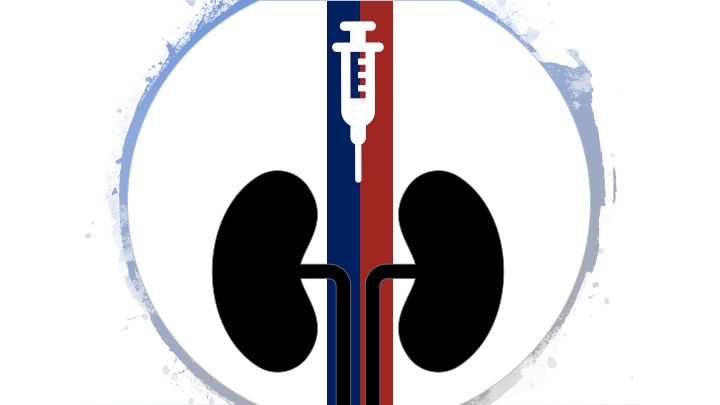
Drs. Shankar and Davenport from @UMichRadiology answer this Q in a fantastic meta-analysis of 16 studies done with group II GBCAs in stage 4 versus 5 CKD patients, published as @radiology_rsna article at pubs.rsna.org/doi/full/10.11….
2/11
2/11
